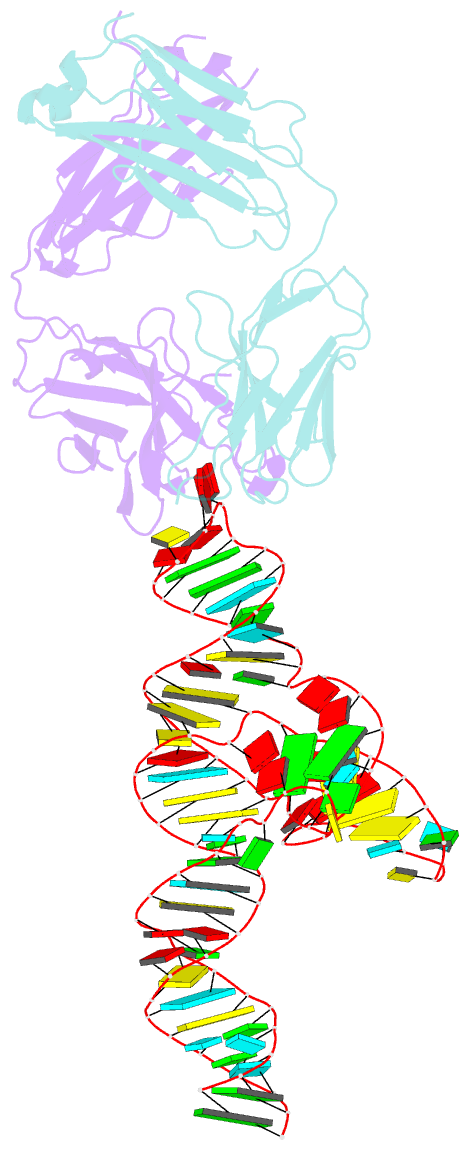Summary information and primary citation
- PDB-id
- 8t2b; SNAP-derived features in text and JSON formats;
DNAproDB
- Class
- RNA-immune system
- Method
- X-ray (3.18 Å)
- Summary
- Crystal structure of scv pte g18c mutant RNA in complex with fab bl3-6
- Reference
- Ojha M, Vogt J, Das NK, Redmond E, Singh K, Banna HA, Sadat T, Koirala D (2024): "Structure of saguaro cactus virus 3' translational enhancer mimics 5' cap for eIF4E binding." Proc.Natl.Acad.Sci.USA, 121, e2313677121. doi: 10.1073/pnas.2313677121.
- Abstract
- The genomes of several plant viruses contain RNA structures at their 3' ends called cap-independent translation enhancers (CITEs) that bind the host protein factors such as mRNA 5' cap-binding protein eIF4E for promoting cap-independent genome translation. However, the structural basis of such 5' cap-binding protein recognition by the uncapped RNA remains largely unknown. Here, we have determined the crystal structure of a 3' CITE, panicum mosaic virus-like translation enhancer (PTE) from the saguaro cactus virus (SCV), using a Fab crystallization chaperone. The PTE RNA folds into a three-way junction architecture with a pseudoknot between the purine-rich R domain and pyrimidine-rich Y domain, which organizes the overall structure to protrude out a specific guanine nucleotide, G18, from the R domain that comprises a major interaction site for the eIF4E binding. The superimposable crystal structures of the wild-type, G18A, G18C, and G18U mutants suggest that the PTE scaffold is preorganized with the flipped-out G18 ready to dock into the eIF4E 5' cap-binding pocket. The binding studies with wheat and human eIF4Es using gel electrophoresis and isothermal titration calorimetry, and molecular docking computation for the PTE-eIF4E complex demonstrated that the PTE structure essentially mimics the mRNA 5' cap for eIF4E binding. Such 5' cap mimicry by the uncapped and structured viral RNA highlights how viruses can exploit RNA structures to mimic the host protein-binding partners and bypass the canonical mechanisms for their genome translation, providing opportunities for a better understanding of virus-host interactions and non-canonical translation mechanisms found in many pathogenic RNA viruses.





